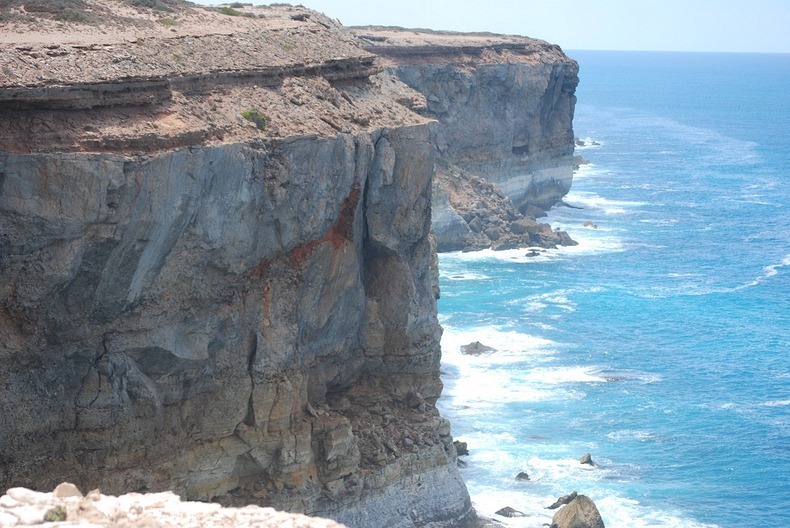Bunda Cliffs in Australia: Is this the End of the World?
-
Located on the Great Australian Bight in Southern Australia, is the vast, featureless Nullarbor Plain - the world’s largest single piece of limestone, covering an area of 270,000 square km and extending some 1,000 km from the east to the west. The area is so flat that the Trans Australian Railway runs across its surface for about 483 kilometers in a completely straight line. On the surface of the plain there are areas of slight depressions where sparse rainfall has slowly dissolved away some of the limestone. There are also places where underground caves or sinkholes have collapsed to form dents in the surface. But mostly, the plain is horizontally flat and devoid of trees, as its Latin name suggests. The Nullarbor Plain ends abruptly at the spectacular Bunda Cliffs, comprising a 200-kilometer-long precipice curving around the Great Australian Bight.

Bunda Cliffs form the southern edge of the Nullarbor Plain which extends far inland. The white coloured base you see near the bottom of the cliff face is Wilson Bluff Limestone. This chalky material formed as part of an ancient seabed when Australia began to separate from Antarctica 65 million years ago. This Wilson Limestone is up to 300 metres thick but only the upper portion is visible in Bunda Cliffs.
Above the white Wilson Limestone are whitish, grey or brown layers of limestone or crystalline rock. Some layers incorporate marine fossils including worms and molluscs indicating their marine origin. Other layers are made up entirely of marine sediment (foraminifera). The cliffs are capped by a hardened layer of windblown sand laid down between 1.6 million and 100,000 year ago.
The cliffs are some 60 to 120 meters high and sheer, and can be viewed from several viewing points along the Eyre Highway east of Eucla and west of Nullarbor roadhouse. But they are better appreciated from the air. The Eyre Highway, Australia’s main east–west link, follows the line of this spectacular coast less than a kilometer inland. The highway was named after Edward John Eyre, who along with John Baxter and three aboriginals, set off from Fowlers Bay in February 1841 in an attempt to reach Albany in Western Australia across the Nullarbor Plain. Lack of water and extreme hardship gave rise to a mutiny and two of the aboriginal boys shot John Baxter and absconded. Eyre and the third Aborigine, Wylie, continued on their journey and completed the crossing in June 1841. The Eyre Highway was laid exactly a century later in 1941.
Over a distance of 85 kilometers along the highway, there are five main lookouts on the cliffs with signed, gravel access roads from the highway. The western lookout is the most popular because visitors can walk to piece of rock jutting out of the cliff that offers a vantage looking point.
At the eastern end of Bunda Cliffs there is a lookout at the Head of the Bight where visitors can stay for hours watching Southern Right Whales in the ocean below the cliffs. Southern Right Whales migrate from the sub-Antarctic in the autumn and give birth to calves in inshore water along the southern Australian coast, then remain in the vicinity for months while the calves put on weight. Head of the Bight is one of these calving/mating grounds.







